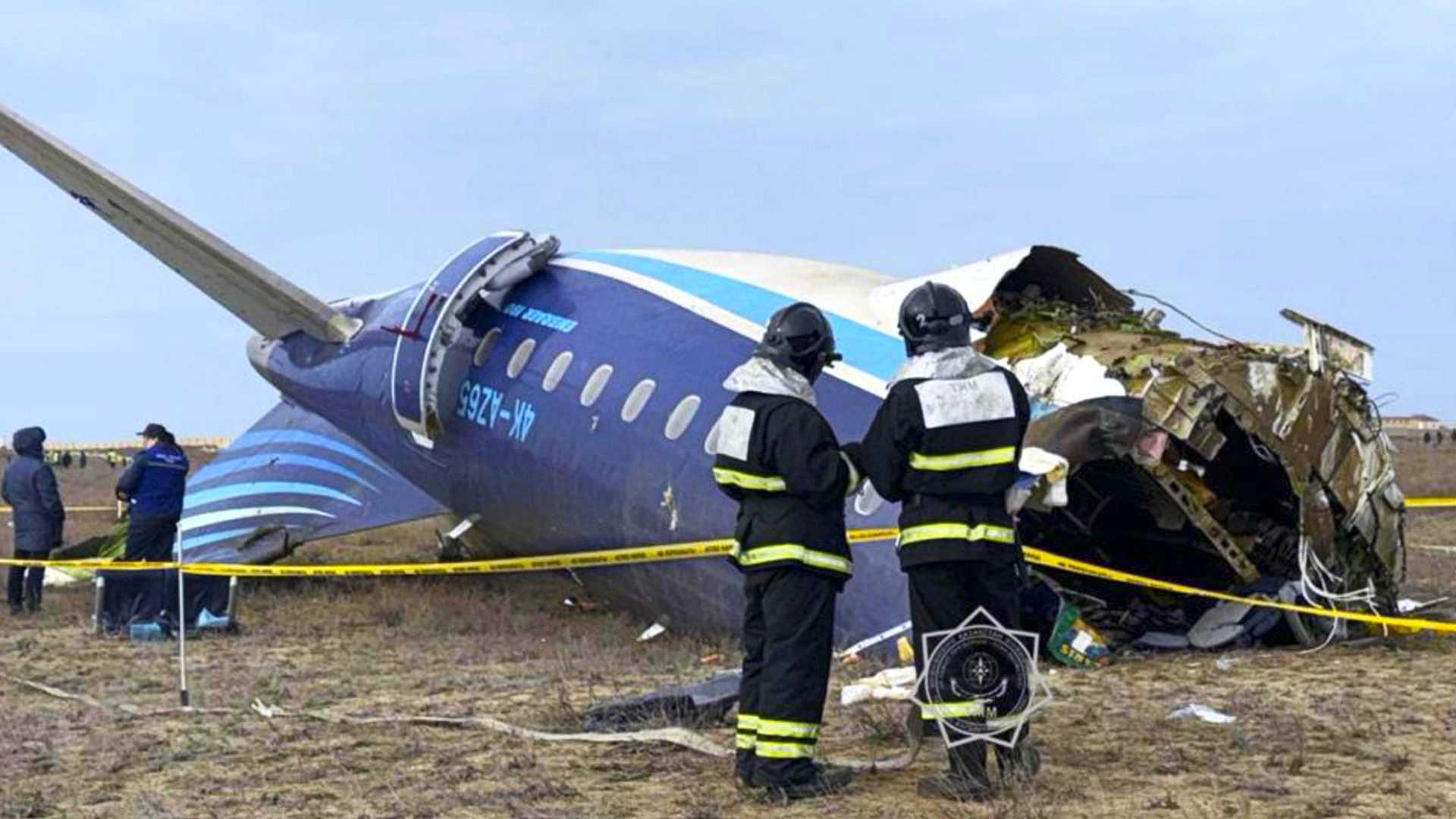 |
|
The tragic crash of Azerbaijan Airlines Flight J2 8243 near Aktau, Kazakhstan, on December 25th, resulting in 38 fatalities and 29 survivors, has ignited a complex and multifaceted investigation involving three nations and a storm of conflicting narratives. The initial reports of adverse weather conditions and potential bird strikes quickly gave way to more alarming theories, centering on the possible involvement of Russian air defense systems. The incident occurred after the plane, en route from Baku to Grozny, Russia, was forced to divert due to reported heavy fog and airspace closures around Grozny. This diversion, however, remains a key point of contention, with multiple accounts suggesting the original decision to divert was made under duress, following a potential strike by Russian forces. The narrative paints a picture of a flight under immense pressure, grappling with changing weather, airspace restrictions, and potentially, direct attack.
The timeline of events remains fuzzy, compounded by differing accounts from Russian and Azerbaijani officials. Russia's Rosaviatsia initially attributed the crash to a bird strike, a claim quickly dismissed by aviation experts due to the altitude of the apparent initial damage. Subsequently, both Russian and Azerbaijani officials pointed to the heavy fog in Grozny as the primary cause for the diversion. However, Russia later introduced the factor of Ukrainian drone activity near Grozny, suggesting that this activity led to the closure of the airspace, forcing the aircraft to deviate from its intended path. This explanation raises further questions regarding the timing and nature of the airspace closure, and whether it may have played a role in the subsequent events.
The most controversial aspect of this incident is the persistent and credible theory of Russian missile involvement. Reports from Azerbaijani news outlets, citing government sources, claim a Pantsir-S1 air defense system fired a missile, striking the aircraft. This is further supported by statements from survivors who recounted hearing explosions before the crash and experiencing impact damage consistent with shrapnel. US intelligence sources have corroborated these claims, suggesting the possibility of involvement from a Russian surface-to-air missile system, adding significant weight to this theory. The pattern of damage observed on the plane's tail section by independent military experts aligns with the shrapnel pattern expected from a Pantsir-S1 missile. These reports raise serious questions about the potential recklessness of Russian forces amidst the ongoing conflict in Ukraine.
Adding to the complexity are the conflicting statements from Russian authorities. While the Kremlin has urged against premature conclusions and deferred to the ongoing investigations, they have denied requests for emergency landings at Russian airports. This, coupled with reports of GPS jamming during the aircraft's flight across the Caspian Sea, casts doubt on Russia’s official stance. The denial of landing requests, coupled with the GPS interference, suggests that the Russian authorities may have actively hindered the Azerbaijan Airlines flight from making a safe landing in Russian territory, potentially exacerbating the situation.
The firsthand accounts of survivors are particularly poignant, providing critical insights into the final moments of the flight. These accounts confirm the occurrence of explosions and impacts, corroborating the theory of external damage. Flight attendant Aydan Rahimli described a loud noise followed by a second bang, a description consistent with a missile strike. Another crew member, Zulfugar Asadov, sustained severe arm lacerations that he described as being akin to an axe wound, further supporting the possibility of shrapnel damage. The testimony of other survivors describing explosions both in the sky and near their seats solidifies the narrative of external interference. These harrowing testimonials underscore the gravity of the situation and lend considerable credence to the theory of external attack.
The investigation into the crash is currently underway, involving Kazakhstan, Azerbaijan, and Russia. The recovery of both black boxes is a crucial step, offering potential to provide a clearer picture of the events leading to the tragedy. The international community watches closely, awaiting the results of this investigation, which will likely have significant geopolitical implications. While the official conclusion remains pending, the preponderance of evidence, encompassing eyewitness accounts, expert analysis, and intelligence reports, points towards a devastating and tragic consequence of the ongoing conflict in Ukraine and potential reckless actions by the Russian military.
The incident raises significant concerns about the safety of civilian aircraft operating near conflict zones and highlights the potential for unintended consequences resulting from military operations. The ongoing investigation is crucial not only for determining the cause of the crash but also for ensuring that similar tragedies can be avoided in the future. The international community is calling for a thorough and transparent investigation to determine responsibility and to prevent future events of this magnitude. The potential implications extend far beyond the immediate tragedy, potentially impacting international relations and the perception of international aviation security in conflict zones.
Source: Azerbaijan Airlines Plane Crash: Russian Missiles, Survivors and Mystery
